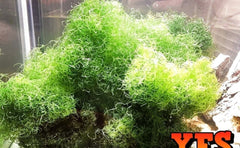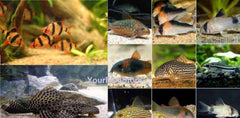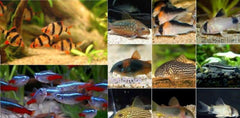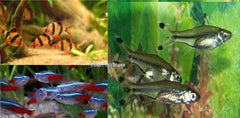X2 Assorted Heliofungia Disk Plates Coral Med L.T. - Bulk Save

x4 ASSORTED HELIOFUNGIA DISK PLATES CORAL MED L.T. - BULK SAVE - FREE SHIPPING
Care Level: Moderate
Temperament: Aggressive
Lighting: Moderate
Waterflow: Medium
Placement: Bottom
he Plate Coral Heliofungia actiniformis is the only member of its genus. It was formerly considered to be a subspecies of the Fungia genus as their skeletons only differ in detail. This was the case until coral biologists became aware of the differing sizes and shapes of the polyps. The Heliofungia coral has the largest polyps of all the stony corals. Both of these large polyp stony (LPS) corals are found in the same types of habitats though the range of H. actiniformis may be a little more restricted. On the reef these corals generally inhabit shallow areas in calm lagoons on sandy or muddy bottoms.
The Plate Coral is also called the Long Tentacle Plate Coral. It has a round disk shape like the Disk Coral Fungia sp., yet it is easily distinguised by its large, long tentacles topped with knobby tips. They are usually brown or olive with white tips, but sometimes are bright green, dark purple, or yellow. Pink tips and solid pink tentacles are also common.
These corals are absolutely beautiful, but with their long flowing tentacles they are often mistaken for anemones. In some instances they have the exact same color and can look like a miniature Magnificent Sea Anemone Heteractis Magnifica when they are mature. They also have curiously similar characteristics as several Euphyllia species, especially when young and still connected to rock work.
In the wild, H. actiniformis normally sits on soft, flat substrates, but they have also been found on rubble. They have the ability to "unbury" themselves in the substrate and right themselves if they are overturned. They do this by filling their tissue with large amounts of water, thus becoming more buoyant. They can then use the water current as their mode of transportation. In the aquarium them may also move about the substrate and so may need to be "boxed in" with rock formations.
The Long Tentacle Plate Coral is somewhat more delicate than the Fungia genus, and so is somewhat harder to care for. Low to moderate water movement is needed and it requires medium to strong light. This coral sends out sweeper tentacles and so should be given a good 6 inches of clearance all around.
H. actiniformis are readily available, so beginners often pick them up, although they generally should be kept by a bit more experienced reef keeper. Usually these corals do fine for some time but then can suddenly die, often for no apparent reason. Once cause of their demise is aquarists placing them on the rock work. This results in falls and/or causes tissue laceration, infection, and death. Another problem is with not feeding them enough, they must be fed daily to thrive in the aquarium.
The Long Tentacle Plate Coral is a large polyp stony (LPS) coral often referred to as a Heliofungia Plate, Mushroom, or Disk Coral. Its genus name, Heliofungia, was derived from the Latin words helios (sun) and fungus (mushroom), which describes its calcareous skeleton shape. With its long tentacles extended, it takes on the appearance of an anemone.
QUESTIONS & ANSWERS
Have a Question?
Be the first to ask a question about this.














